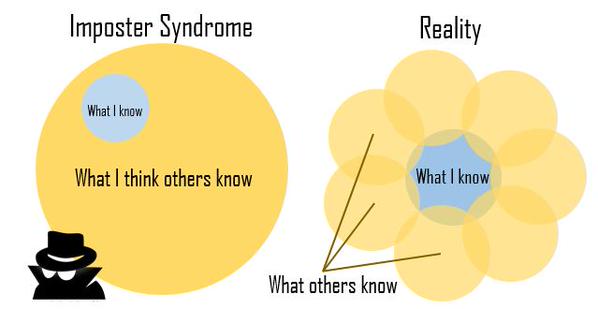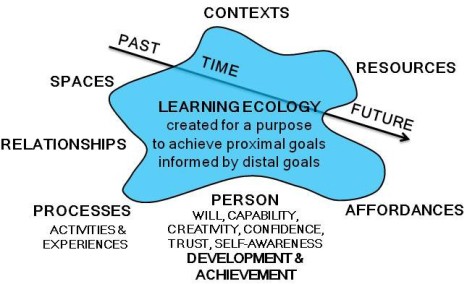
This week’s #lthechat (no 87- what will 100 be?) was about CPD or, to be more precise, Professional Development Challenges in Learning and Teaching in Higher Education and led by Prof Sally Brown.
Q1 What professional development challenges do you plan to set yourself in the next academic year?
 Er um – I’m not sure.
Er um – I’m not sure.
As the #lthe-chatters listed plans, I sidetracked, taking note of those involving technology, out of interest….but what about the question. What were my own ‘professional challenges’? Then I remembered the PhD. Of course! So why didn’t I initially think of it as CPD? The second question held a clue.
Q2 How can you best engage with students in planning and achieving your CPD?

One chatter posted ‘Not entirely sure what you mean? CPD for me or CPD I deliver for others?’ The reply was ‘for me!’
Another posted ‘Stunning question Hadn’t thought it was something I could do … but it obviously is.’
So not only me! I wonder if there’s a wider tendency to think of CPD in terms of what we provide for others rather than what we do for ourselves?
If so, is the belief related to areas like Academic Practice or Learning Development which are about supporting others to achieve. Could it even be a gender issue. Traditional social conditioning as in being taught to look out for others, be the carer, mender, the one who keeps it all together. Does cultural construction make it more likely some will interpret CPD as ‘do unto others’ rather than ‘unto yourself’?

OR
…do we do CPD without being aware of it. Like students not recognising feedback.
The accompanying #lthechat post listed seven CPD challenges from ‘Professionalism in practice: key directions in higher education learning, teaching and assessment’. These are about ‘translating action into transformative change’. If you saw CPD as doing a mooc or reading a book, take a look at this. CPD can involve any – or all – of the following …
- Stepping out of your comfort zone
- Making an effort
- Talking more to students
- Checking out inclusive practice
- Reviewing internationality
- Becoming more scholarly
- Taking up mentoring or coaching
As if my head wasn’t already thinking enough, question 4 arrived. Which are your key communities of practice: what do you give to them and what do you gain from them? Physical/Virtual

It woz the binary wot did it! Physical/Virtual. For some time I’ve been brooding about how my online life is isolated from my real one. The social media I use isn’t shared by most of my working colleagues (or home peeps come to that, but we’re talking CPD so family/friends is different).
My online professional network is supportive, informative and sometimes game-changing. Take the PhD. Transferring from Lincoln to Hull hadn’t gone well. I was upset at how three years of research into the attitudes and practices of academics online, and how they conceptualised teaching and learning in a digital age, had been rejected. Then a by-the-by comment on Twitter led me to the University of Northampton and Ale Armellini who is now my PhD supervisor. It couldn’t be better. Thank you internet and Chrissi Nerantzi.

We all have similar stories of digital synchronicity. Like the time I found an elusive book of poetry via Twitter in under half an hour! Also regular events like #lthechat can lead to unexpected connections and insights. Yet when I look around, it feels those of us with virtual lives are still the minority. The dominance of the 3P’s, Pen, Pencil and Paper, may be greater than we realise.

Don’t get me wrong! I’m not demanding colleagues be online, or become part of my online life, but I’m aware of their absence. It’s like the ‘Did you watch….’ conversation in the kitchen. I don’t have a tv so am immediately excluded. I’m more likely to ask ‘Did you see….on Twitter’ or ‘have you read the latest post on …..blog’ but I don’t because no one has.
My tweet-answer summed it up. great support/sharing via @twitter but digitally shy colleagues excluded – feel I’m digital/analogue hybrid.

I juggle two worlds – the virtual and real – which feels like I don’t fully fit in either. Like the Roman God Janus, I look both ways. I have dual identities, maybe triple if you include my social use of the internet. Either way I’m an analogue/digital hybrid.
Hybridity is an interesting concept. It’s been around for some time, long before the digital, more complex than a binary, and seemingly well suited to an internet age.
As so often happens, a blog post on one topic is ending on another.
More on hybridity another day.
In the meantime, back to CPD, or in this case – the CPhD.

Storify of #lthechat 14/06/17 available here:https://storify.com/LTHEchat/lthechat-no-87-professional-development-challenges
blog images from #lthechat or https://pixabay.com




